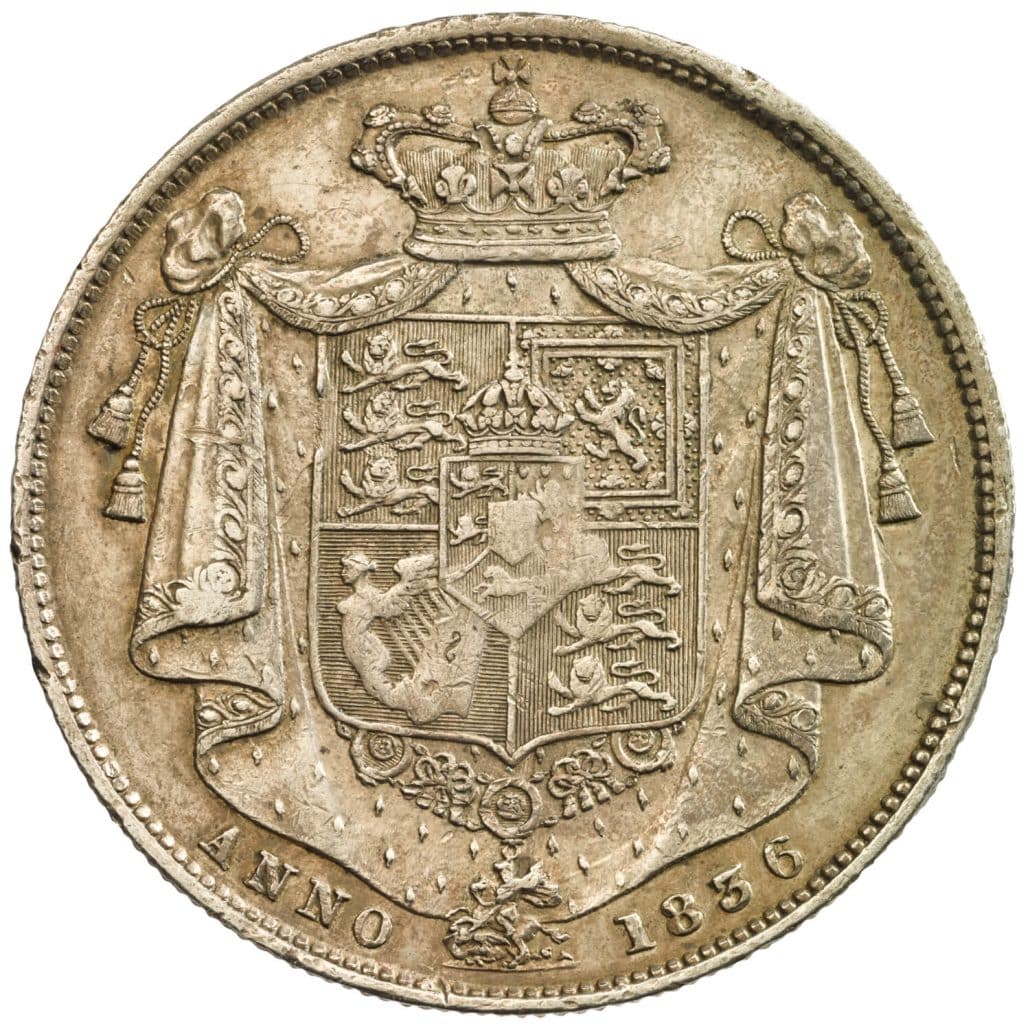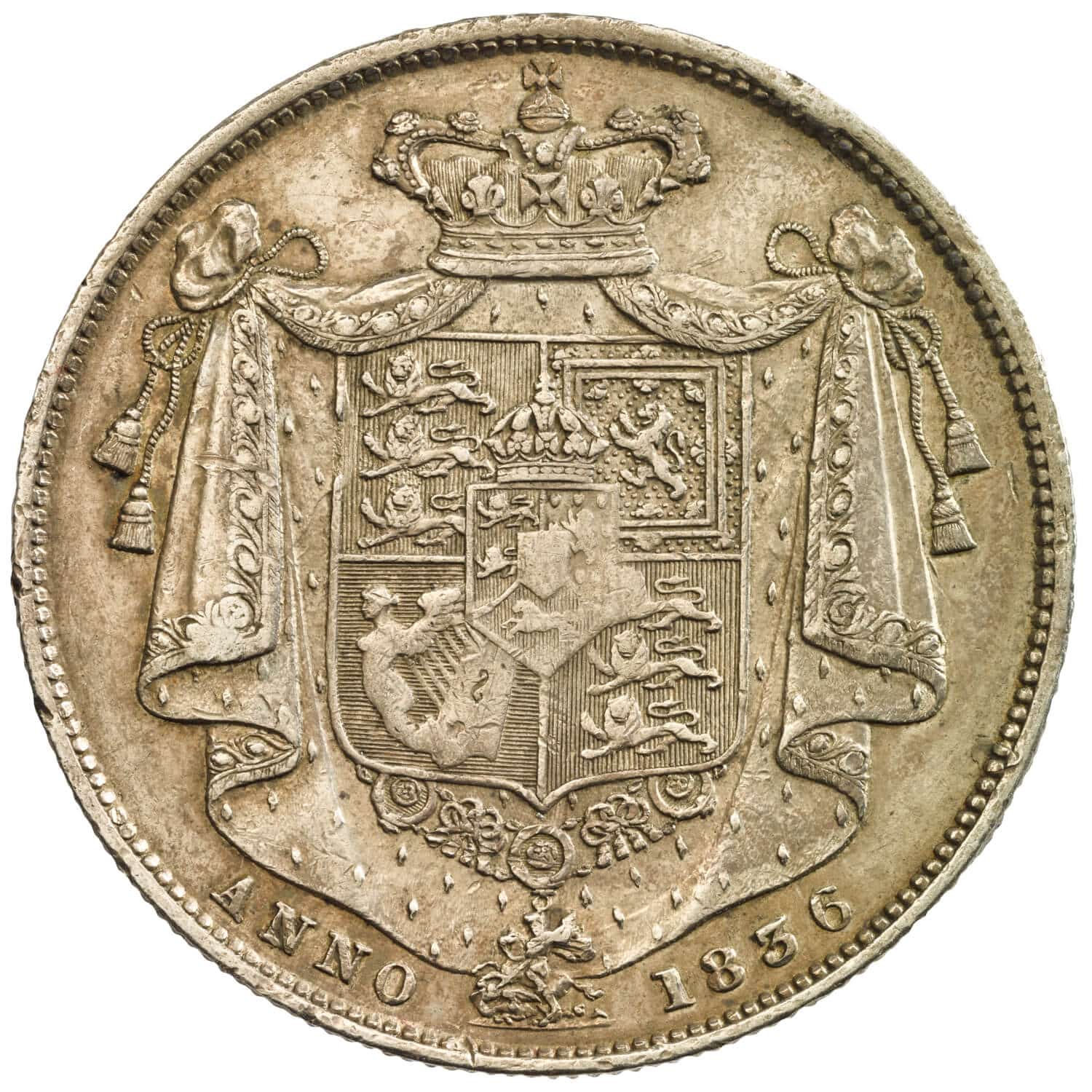The allure of the William IV half-crown goes beyond its monetary worth, captivating coin collectors and historians alike with its intricate detailing and significant heritage. As a cornerstone in British coinage, it reflects the craftsmanship of its era, underscored by its rarity and desirability. Unveiling its true value becomes a pursuit filled with excitement and scholarly intrigue. This article delves into its intricate history, outlining its origin and context. Readers gain insight into factors shaping its value, including condition, rarity, and broader narrative in British coinage. Market value and practical tips for buying and selling are explored, empowering collectors to make informed decisions. The conclusion reinforces its cultural and historical importance, urging further exploration into coin collecting’s rich tapestry.
History of the William IV Half-Crown
The Reign of William IV
William IV ascended to the British throne in 1830, following the death of his elder brother, George IV. His reign, although brief, lasting only until 1837, was marked by significant legislative reforms including the Great Reform Act of 1832 and the Slavery Abolition Act of 1833. These reforms were instrumental in shaping the social and political landscape of 19th-century Britain. Despite his relatively short time as monarch, William IV’s impact on British coinage, particularly the half-crown, remains highly collectable and sought after by numismatists today.
Minting and Design Features
The William IV half-crown featured one of the most admired designs in British numismatics, the crowned mantle shield, created by the renowned engraver Jean Baptiste Merlen. This design uniquely represented the United Kingdom, incorporating the three lions of England, the lion rampant of Scotland, and the harp of Ireland, with a small crown surmounted version of the Hanoverian Arms at the centre. The Latin word “ANNO“, meaning “IN THE YEAR OF THE WORLD“, and the date of minting were also prominent features. This design was exclusive to the William IV half-crowns, making them particularly rare and valuable. High-grade examples of these coins are scarce, further increasing their desirability among collectors. The intricate design and limited circulation of the William IV half-crown underscore its significance in the realm of British coinage.
Factors Influencing the Value
Historical Significance
The William IV half-crown holds a unique place in British numismatic history, minted during a period of profound change and reform under the reign of William IV from 1830 to 1837. This era saw significant legislative reforms, including the Great Reform Act of 1832 and the Slavery Abolition Act of 1833, which not only shaped the socio-political landscape of 19th-century Britain but also influenced its coinage. The half-crown, being the largest silver coin issued for circulation during this monarch’s short reign, encapsulates this historical epoch, enhancing its appeal to collectors fascinated by British royal history.
Condition and Grade
The condition and grade of a William IV half-crown significantly affect its value. Coins from this period often exhibit wear, especially in the lettering and shield design, due to their thin rims and heavily raised details. The European Grading System provides a framework for assessing the condition of these coins, with values ranging significantly based on their grade. For instance, coins in Very Good (VG) condition may fetch considerably lower prices than those in Uncirculated (Unc) condition, highlighting the importance of preservation and careful handling over the years.
Rarity and Demand
Rarity and demand are pivotal in determining the value of the William IV half-crown. The half-crown was only struck for circulation in the years 1834, 1835, 1836, and 1837, making high-grade examples from these years particularly scarce and sought after. Additionally, the limited mintage numbers, with approximately 150,526 coins minted, further contribute to their rarity. The demand for these coins among collectors, driven by their historical significance and rarity, plays a crucial role in their market value. Collectors seeking to own a piece of British royal history often compete for the limited available specimens, driving up their value.
In summary, the value of a William IV half-crown is influenced by a blend of historical significance, condition and grade, and rarity and demand. Each factor plays a critical role in determining its appeal and worth in the collectors’ market.
Current Market Value
Understanding the current market value of the William IV half-crown is pivotal for collectors and investors alike. This section delves into recent sales and auctions, alongside examining the influence of market trends on the coin’s valuation.
Recent Sales and Auctions
- Auction Highlights: A notable auction at London Coins LTD saw a William IV half-crown from 1831, with a plain edge and struck at The Royal Mint, fetching a record GBP 38,000 on September 2, 2023. This underscores the coin’s desirability among collectors.
- Grading and Prices: The condition of the coin plays a crucial role in its valuation. For instance, a PF63 PCGS graded coin sold for $3,925, while a PF64 CAMEO NGC graded coin reached $7,862 at auction.
- Sellers and Auction Houses: Diverse auction houses, including Heritage, Spink, and London Coins, have been instrumental in facilitating these sales, offering a range of conditions from MS63 to ULTRA CAMEO grades.
Influence of Market Trends
The steady rise in prices of collectable coins since the early 2000s, with certain British coins setting world records in recent auctions, evidences this trend. The historical significance and rarity of the William IV half-crown contribute to its value, which sees an uplift during economic turbulence. Collectors and investors perceive these coins as a secure investment, akin to gold, ensuring their enduring appeal even in volatile markets.
In summary, specific sales and auction outcomes, the coin’s condition, and broader economic trends influence the current market value of the William IV half-crown. Collectors looking to acquire or sell should remain mindful of these factors to navigate the market effectively.

Conclusion
Through an exploration of its historical significance, design intricacies, and factors influencing its value, we have uncovered the multifaceted allure of the William IV half-crown. This coin, emblematic of a dynamic period in British history, remains a sought-after treasure for collectors, embodying both the aesthetic beauty and the profound legislative achievements of its time. Its rarity and condition further elevate its status among numismatic enthusiasts, making it not only a piece of history but also a valuable investment in the world of collectable coins.
Encouraging further discovery and inquiry into the rich tapestry of coin collecting, this examination of the William IV half-crown serves as a testament to the enduring fascination with Britain’s numismatic heritage. Collectors are urged to pursue their passion with both knowledge and caution, armed with the insights provided on authenticity verification, market valuation, and strategic buying or selling. In doing so, they contribute not only to the preservation of history but also to the vibrant community of numismatics, ensuring the legacy of the William IV half-crown and other historical coins continues for generations to come.


I loved as much as youll receive carried out right here The sketch is attractive your authored material stylish nonetheless you command get bought an nervousness over that you wish be delivering the following unwell unquestionably come more formerly again as exactly the same nearly a lot often inside case you shield this hike
Thank you so much! Your opinion is very important to us and we will continue to work hard to write more and more relevant content. I hope to see you here many more times 😉